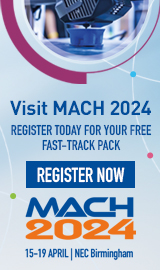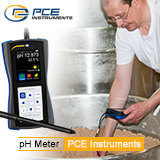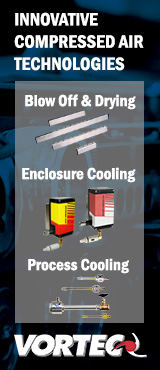All charged up
Terry Kendrew, Managing Director at Impact Handling, brings some balance to the hype surrounding Lithium-ion and looks at the latest developments in Lead Acid technology.
It’s seems hard to escape the headlines around Lithium-ion at the moment. There is certainly a great deal of excitement and frenzy around its arrival on the lift truck scene. But while it is undoubtedly a great technology, is it really the perfect solution to every electric truck users’ needs, as some may suggest?
Before I start, I should probably clarify where my allegiances lie. I certainly wouldn’t want to be accused of having an axe to grind, nor for anyone reading this to think I have an agenda to push them one way or the other. And I certainly wouldn’t wish to be exposed to the highly-charged wrath of those who have decided to place all their eggs into one basket.
At Impact, the brands we represent have all spent – and indeed continue to spend – a great deal of time and money developing, evaluating and testing the latest power train advancements. No more so recently, than with electric truck battery technology.
As a result, across our portfolio of equipment ranges, we offer both Lithium-ion and Lead Acid battery power in differing machines. Applying the relevant technology where we and our manufacturers believe it is best suited, within the confines of the technology as it stands today.
As a result, I do not favour one technology type over another, per se, but rather feel that each has applications it is better suited to than the other.
However, I am a little concerned that Lithium-ion has been somewhat over-sold by some recently, and that as a result some very important considerations have perhaps been overlooked.
Firstly, safety
Lithium-ion can run hot when strained or used towards and beyond its limits. As a result, it is imperative when evaluating its use in your applications that you are very realistic about the likely demands you will place on the equipment, including any potential misuse by drivers.
Care must also be taken with charge levels, particularly when equipment is not in use and most importantly in avoiding a full discharge of the battery. In fact, battery manufacturers recommend that a machine is never left unattended with a fully discharged Lithium-ion battery on board.
We have also recently seen instances of insurance implications when Lithium-ion technology is used in certain operational environments. This may be an overreaction to exploding smartphone batteries but is nonetheless worth raising with your insurers before making any final commitments.
Secondly, discipline
Remember most Lithium-ion batteries HAVE to be, rather than can be, opportunity charged. Be sure that this will always be convenient within the material flow fluctuations of your operation. If you run two or even three shifts your operatives will have to be extremely disciplined in their charging schedule for Lithium-ion to be a viable option, be sure this can be a workable reality. You will need to be ship-shape from day one.
Thirdly, cost
Lithium-ion is a significant investment, not just in terms of the equipment itself, but also in terms of its supporting infrastructure. Not only will a greater number of battery charging points be required, but mains power infrastructure may also need to be upgraded to cope with the higher peak demands generated by Lithium-ion chargers. These can draw up to 500amps each. The batteries themselves are also more expensive, on average costing over four times as much as their equivalent Lead Acid counterparts. These additional costs all add up to make the technology a more expensive option than Lead Acid.
Don’t forget either that Lithium-ion technology in lift trucks is still in its infancy and as such much of its performance is unproven. When calculating total life costs remember to build in some contingency in case battery life falls short of predictions. Lift trucks do not give batteries an easy life, often subjecting them to dramatic temperature changes, physical shock loading, heavy vibration and enormous peak power demands. It is too soon to be certain how all of this will really impact on Lithium-ion battery life.
Finally, there’s still spark in Lead Acid
While no one seems to want to write a headline about poor old Lead Acid anymore, behind the scenes it’s been working hard on its image. As a result, it has made some surprising and significant technological developments of late, most of which seem to have gone unnoticed, but are certainly worthy of your attention.
Did you realise, for example, that Lead Acid batteries can now be opportunity charged. Yes, that’s right CAN be opportunity charged. Giving users the flexibility to do so or not as best suits fluctuations in their material handling needs. With Lead Acid this is achieved with no danger from under or over charging and with a high level of operator safety.
The Intelligent battery chargers which make this possible are microprocessor-regulated, which brings with it the additional benefit of prolonged battery life – delivering the flexibility of Lithium-ion while further lowering costs.
There have also been innovations in battery change-over systems, which now helpfully remove much of the time and hassle previously associated with battery management. The availability of advanced encapsulated batteries further minimises maintenance hours, reducing time spent on replenishing water, cleaning and inspection, which makes them virtually maintenance free.
Let’s not forget, that although Lead Acid has always had an environment stigma attached to it, the batteries can be recycled. Unfortunately, we don’t have the same clarity on the future disposal of Lithium-ion cells, so it’s environmental credentials remain unclear. Also, rather amazingly, lead is still required in many Lithium-ion fitments as a counterbalance ballast material beneath the battery.
Looking ahead, there is also at least one innovative hybrid solution that is currently being developed which combines both Lead Acid and Lithium-ion. The idea being to remove any of the disadvantages while building on the advantages of both battery types. We very much look forward to announcing further details on this breakthrough in the near future.
By the way, don’t be afraid to contact battery manufacturers directly. They’ll be happy to talk to you and it’s a great way to better understand the technology or to clear up any specific concerns you may have regarding battery use or suitability.
The great news for electric truck users though is that there has never been more choice. Both Lithium-ion and the latest Lead Acid solutions are bringing enhanced levels of efficiency, reduced maintenance and new levels of flexibility to handling equipment users.
The competition between the two has created a new generation of machines, a choice that removes many of the drawbacks of the past and makes electric trucks a genuinely viable alternative to gas and diesel. Even within the most demanding of applications and hostile of environments.
Just make sure you scratch beneath the surface – and look beyond the hype – to find the one that’s right for you. Thoroughly evaluating their practicalities and suitability within your operation. That way you’ll avoid any nasty shocks in the future.
































